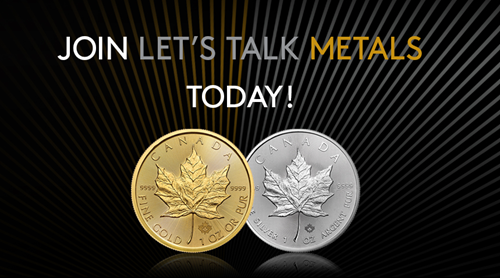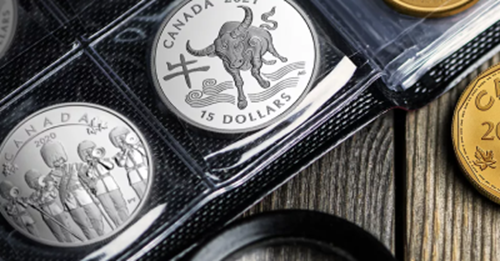Gold’s Journey: From Meteorites to Modern Markets
- Oct 29, 2024
- Learn
- 4 minute read
It is true that a rainbow can lead you to gold, but you won’t find it in a pot at its end. Instead, look through its vibrant colours, beyond the sky and deep into space.
Gold arrived on earth billions of years ago on the back of meteorites that embedded it into the earth’s crust. Discovered by humankind only some 5,000 years ago, gold has captivated humanity ever since. It has been part of our culture and traditions for millennia. It is used not just in jewellery, but also in cutting-edge scientific advancements. Despite having been discovered on almost every continent on the globe and in our oceans, gold is incredibly rare.
According to the United States Geological Survey, only about 244,000 metric tons of gold has ever been discovered (above and underground). All this gold would fit in a cube that is 22 meters wide on all sides. As a comparison, all the silver ever discovered (1,740,000 metric tons) would fit in a cube that is 55 meters wide on all sides.
Where is all this gold? Experts at the World Gold Council have outlined a comprehensive infographic that outlines today’s gold market structure and demonstrates how gold flows through it —giving us a sense of where all the world’s above-ground gold stock is.
Explore this infographic to understand more about gold’s journey through today’s market and see what role Canada’s mint has within it.
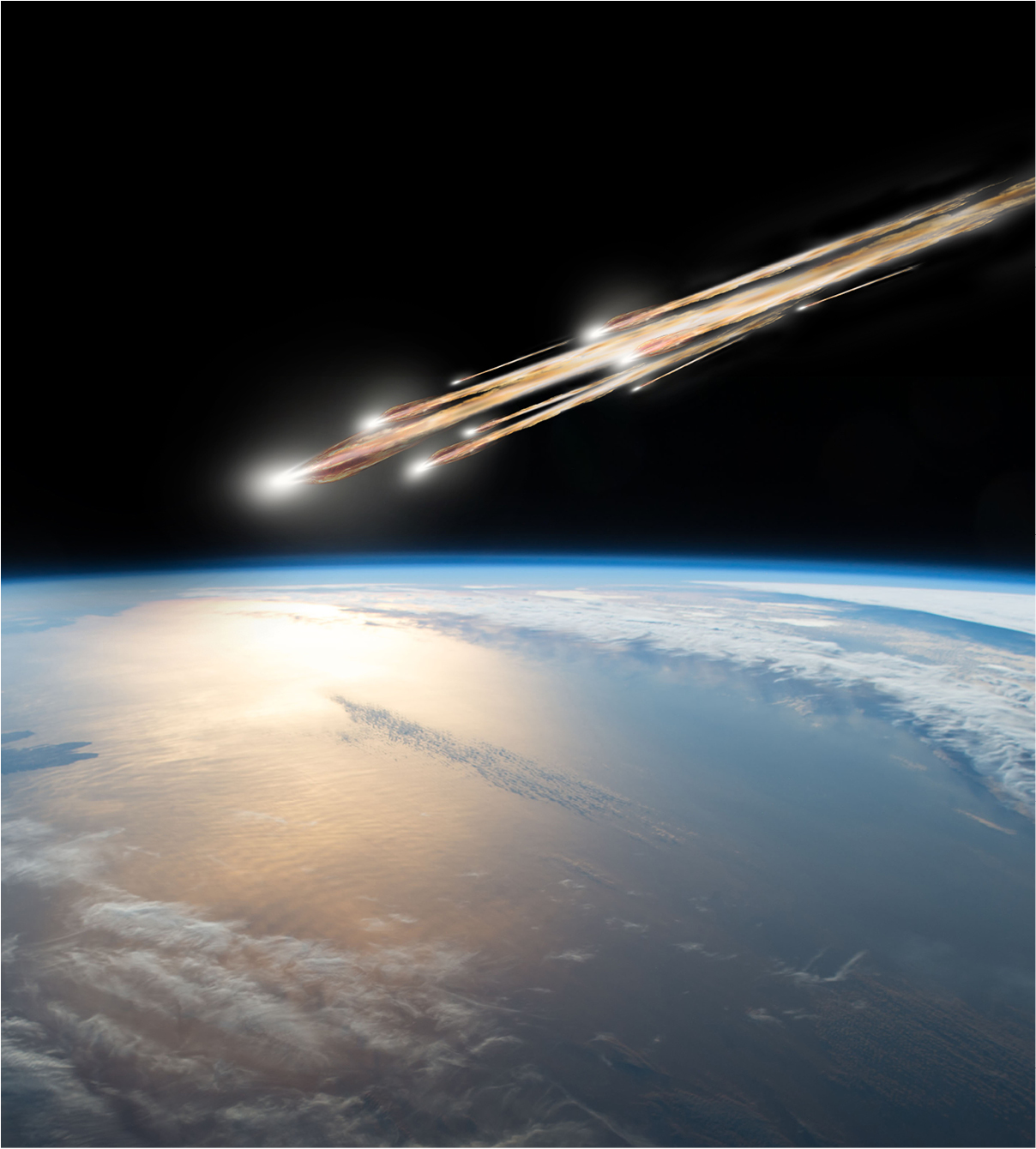

Gold arrived on earth billions of years ago on the back of meteorites that embedded it into the earth’s crust.
It is true that a rainbow can lead you to gold, but you won’t find it in a pot at its end. Instead, look through its vibrant colours, beyond the sky and deep into space.
Gold arrived on earth billions of years ago on the back of meteorites that embedded it into the earth’s crust. Discovered by humankind only some 5,000 years ago, gold has captivated humanity ever since. It has been part of our culture and traditions for millennia. It is used not just in jewellery, but also in cutting-edge scientific advancements. Despite having been discovered on almost every continent on the globe and in our oceans, gold is incredibly rare.
According to the United States Geological Survey, only about 244,000 metric tons of gold has ever been discovered (above and underground). All this gold would fit in a cube that is 22 meters wide on all sides. As a comparison, all the silver ever discovered (1,740,000 metric tons) would fit in a cube that is 55 meters wide on all sides.
Where is all this gold? Experts at the World Gold Council have outlined a comprehensive infographic that outlines today’s gold market structure and demonstrates how gold flows through it —giving us a sense of where all the world’s above-ground gold stock is.
Explore this infographic to understand more about gold’s journey through today’s market and see what role Canada’s mint has within it.
Gold Supply Demand and Use
THE NUMBER ONE LARGEST SOURCE OF DEMAND FOR GOLD IS JEWELLERY
THE LARGEST SOURCE OF SUPPLY OF GOLD COMES FROM MINES
THE USE FOR GOLD IS DIVERSE: JEWELLERY, INVESTMENT, TECHNOLOGY, CENTRAL BANKING
Gold Exploration, Recycling and Refining
The Mint has more than a century of experience in precious metal refining. In 2023, we refined over 6.6 million ounces of gold! Where did this gold come from? As a full standing member of the London Bullion Market Association (LBMA), we source gold in accordance with the LBMA’s Responsible Gold Guidance from two areas: mining and recycling. Much of our feedstock comes from Canadian mines in the shape of a doré bar, while other amounts of recycled gold come to us from various North American sources. Recycled gold has many forms, including jewellery, decorative items, coins, bars and electronics, just to name a few.
At the Mint, we ensure all material refined and used in our precious metal investment products has been sourced responsibly and require all our precious metals customers and suppliers comply with our Responsible Sourcing (Precious Metals) Policy. This Policy aligns with the compliance requirements defined by the LBMA for Good Delivery Refiners, and embodies our commitment to promote, support and engage with secure, transparent, and verifiable mined or recycled precious metal supply chains for our refinery.
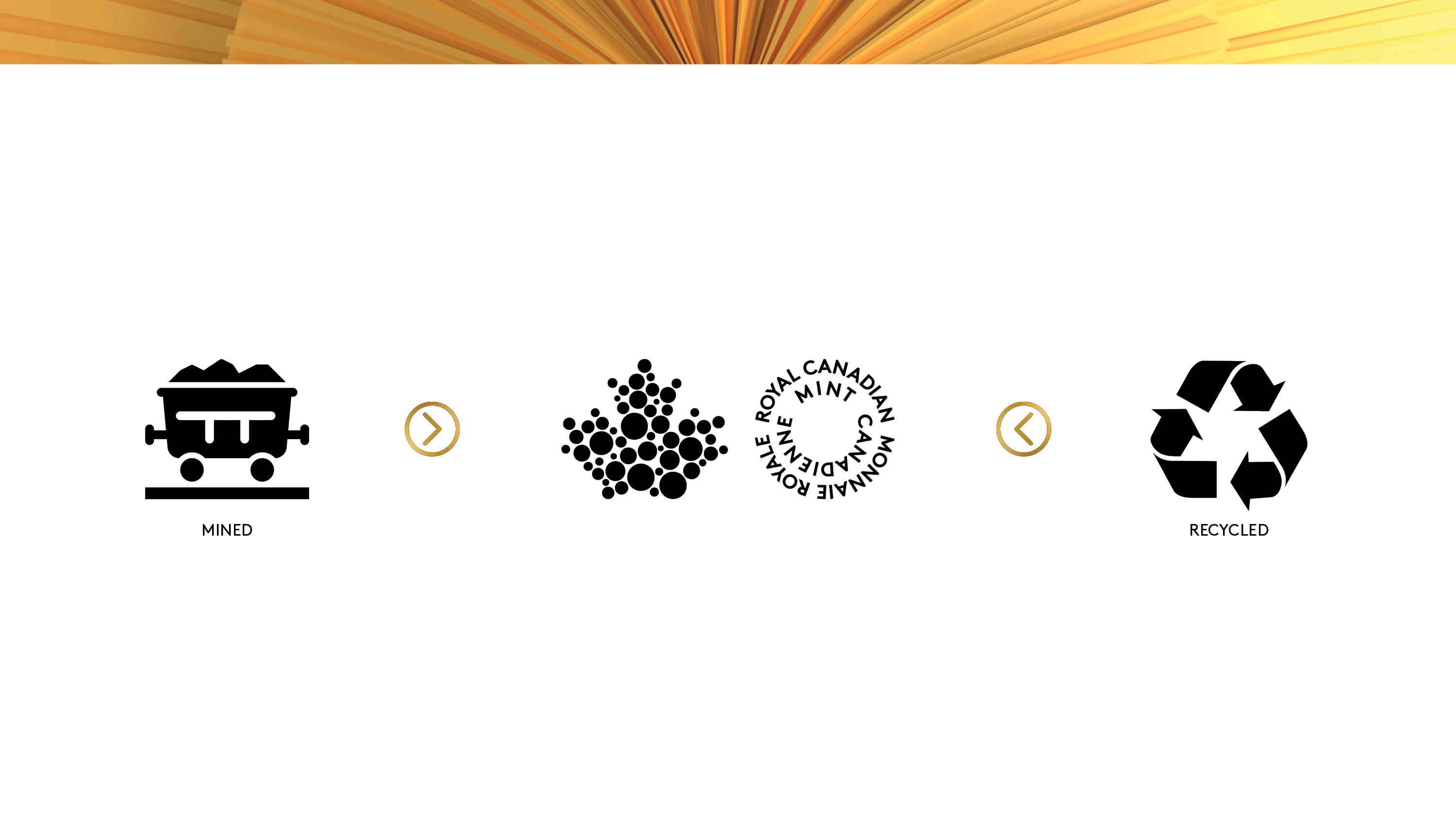
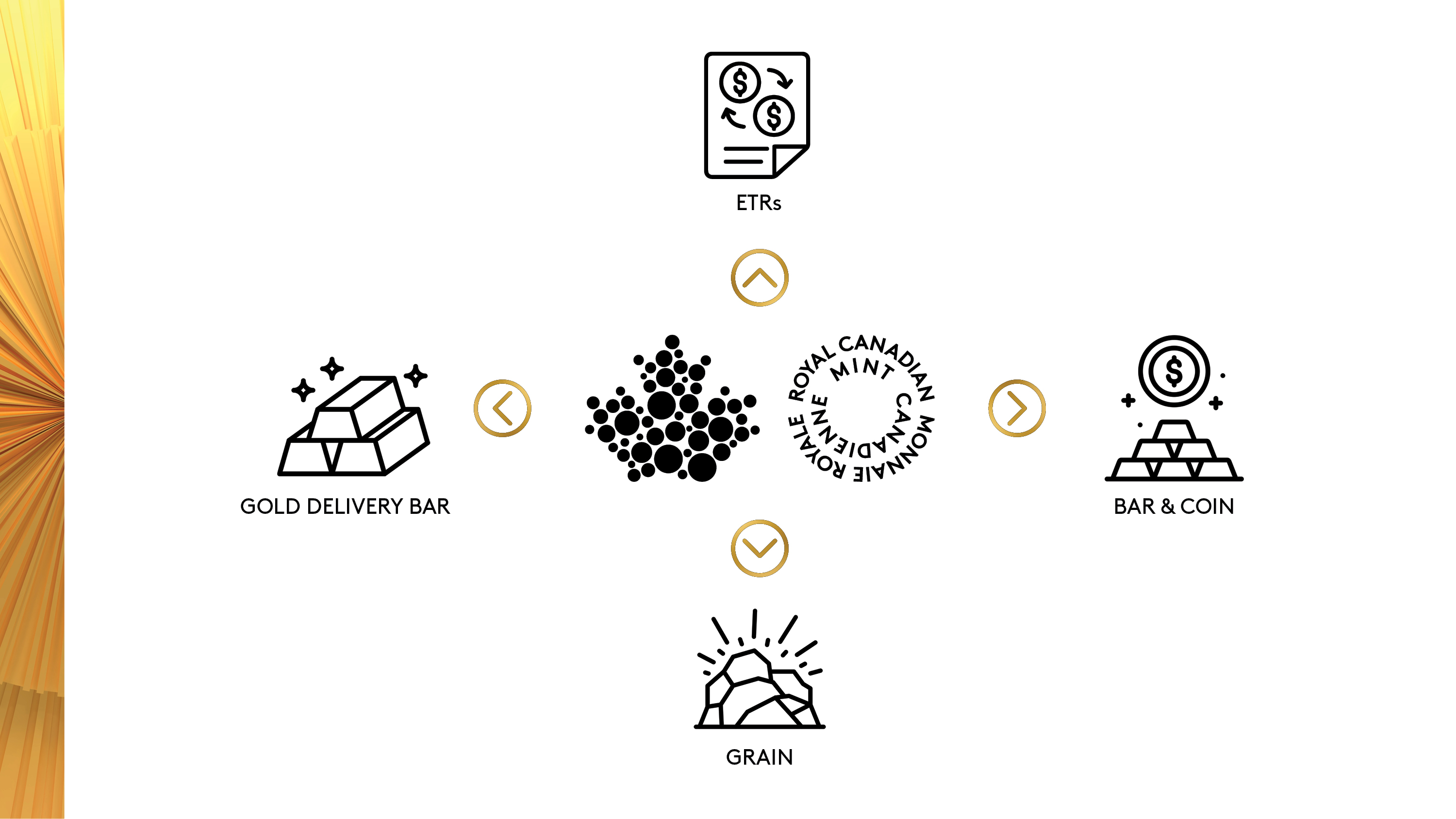
Gold bullion and semi-finished goods
As a manufacturer and producer of precious metal investments products, the Mint participates in the retail sector of the gold market by providing gold bullion coins and small bars. In addition, we also support the institutional market with the production of larger bars, for example the 400-ounce gold London Good Delivery bar and the 100-ounce COMEX Good Delivery bar. And for over a decade, we have been offering investors with a secure, convenient, and low-cost way to invest in physical gold through our gold Exchange-Traded Receipts (ETRs), which trade on the Toronto Stock Exchange (TSX:MNT). Lastly, we offer jewelers and manufacturers a gold grain product—small nuggets of pure gold.
Tracing Gold Through the Market
If understanding how gold flows through the market is step one, then knowing exactly where gold comes from and where it has been, is step two. As more consumers and businesses seek greater transparency in the provenance and custody of bullion products, we are proud to have a solution that offers this possibility—tracing gold’s journey through the supply chain.
Introduced to our refining operations in 2024, Bullion GENESIS™ powered in part by aXedras and based on Distributed Ledger Technology (DLT), is our solution to tracking the provenance and custody of gold entering and leaving our refinery.
The technology is currently available to customers seeking specific products made of segregated gold, but its use will soon be expanded to include more products. Anyone in custody of a gold product that utilizes Bullion GENESIS™ can validate its legitimacy, view the origin of the gold contained in the bar, know where the gold was refined, see who has custody of the gold (e.g. storage and vaulting) and track its entre history from mine to customer.
To learn more about our refining history, bullion products or precious metal products, visit the Invest section of our website.
© 2024 Royal Canadian Mint. All rights reserved
Disclaimer:
Some links to websites and references to documents provided are available in English only and are owned or operated by third parties. By accessing a third-party website and/or document you understand that they are independent from the Royal Canadian Mint (the “Mint”) and that the Mint has no control over the content of such third-party websites and cannot assume any responsibility for materials created or published by such third-party websites. In addition, a link to a third-party’s website or document does not imply that the Mint endorses the website, the data, information and/or the content of such website. It is your responsibility to ensure that you review and agree to terms and conditions applicable to such websites before using it. Please note that the Mint is not responsible for webcasting or any other form of transmission received from any linked website.
The information provided herein is intended for informational purposes only and is not intended to constitute investment, financial, legal, tax or accounting advice, and you should not rely on the information herein for such advice. Past performance, and historical trends are not indicative of future results. Many factors unknown to the Mint may affect the applicability of any statement or comment made herein to your particular circumstances, and this information does not take into account any investment objectives, financial situation or particular needs of any particular person. You should directly consult your financial professional or other advisors before acting on any information herein. The information and materials herein are provided with the understanding that the Mint is not acting in a fiduciary capacity. Nothing contained herein constitutes a solicitation, recommendation or offer for the purchase or sale of products or services of any kind whatsoever. Diversification does not guarantee any investment returns and does not eliminate the risk of loss.
The information provided herein may contain forward-looking statements which are based on current expectations and are subject to change. Forward-looking statements involve significant known and unknown risks, uncertainties and assumptions. A number of factors could cause actual results, performance or achievements to be materially different from any future results, performance or achievements that may be expressed or implied by such forward-looking statements. These statements are not guarantees of future performance and should not be relied upon as such. The Mint assume no responsibility for updating any information, including forward-looking statements, contained herein.
Mint does not guarantee the accuracy or completeness of any information contained herein, nor does the Mint accept responsibility for any losses or damages arising directly or indirectly from the use of or reliance on this information.
Reproduction or redistribution of any of this information is expressly prohibited without the prior written consent of the Mint.
Any person accessing this information should also consult the Mint’s website Terms of Use | The Royal Canadian Mint.

